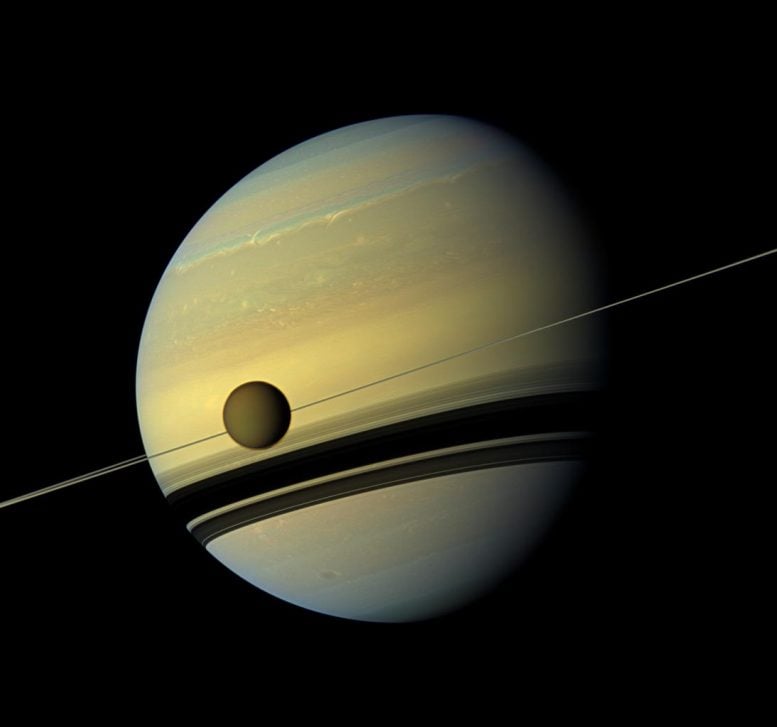
Scientists propose a lost moon of Saturn, which they call Chrysalis, pulled on the planet until it ripped apart, forming rings and contributing to Saturn’s tilt. This natural color view of Saturn was created by combining six images captured by NASA’s Cassini spacecraft on May 6, 2012. It features Saturn’s huge moon Titan, which is larger than the planet Mercury. Below Titan are the shadows cast by Saturn’s rings. Credit: NASA/JPL-Caltech/Space Science Institute
Saturn’s Rings and Tilt Could Be the Product of an Ancient, Missing Moon
According to a new study, a “grazing encounter” may have smashed the moon to bits to form Saturn’s rings.
Swirling around the planet’s equator, the rings of Saturn are an obvious indicator that the planet is spinning at a tilt. The belted gas giant rotates at a 26.7-degree angle relative to the plane in which it orbits the sun. Because Saturn’s tilt precesses, like a spinning top, at nearly the same rate as the orbit of its neighbor Neptune, astronomers have long suspected that this tilt comes from gravitational interactions with Neptune.
Saturn is the sixth planet from the Sun and the second-largest planet in our solar system. Saturn, a gas giant like Jupiter, is a massive ball made mostly of hydrogen and helium. While it is not the only planet to have rings, none are as magnificent or as complex as Saturn’s. Saturn also has dozens of moons. It is named for the Roman god of agriculture and wealth, who was also the father of Jupiter.
However, a new modeling study by astronomers at MIT and elsewhere has found that, while the two planets may have once been in sync, Saturn has since escaped Neptune’s pull. What was responsible for this planetary realignment? The research team has one meticulously tested hypothesis: a missing moon. Their study was published in the journal Science on September 15.
In the study, the team proposes that Saturn, which today hosts 83 moons, once harbored at least one more, an extra satellite that they named Chrysalis. Together with its siblings, the astronomers suggest, Chrysalis orbited Saturn for several billion years, pulling and tugging on the planet in a way that kept its tilt, or “obliquity,” in resonance with Neptune.
However, the team estimates that around 160 million years ago, Chrysalis became unstable and came too close to its planet in a grazing encounter that pulled the satellite apart. The loss of the moon was sufficient to remove Saturn from Neptune’s grasp and leave it with the present-day tilt.
Furthermore, the astronomers surmise, while most of Chrysalis’ shattered body may have made impact with Saturn, a fraction of its fragments could have remained suspended in orbit, eventually breaking into small icy chunks to form the planet’s signature rings.
Chrysalis, the missing satellite, therefore, could explain two longstanding mysteries: Saturn’s present-day tilt and the age of its rings, which were previously estimated to be about 100 million years old — much younger than the planet itself.
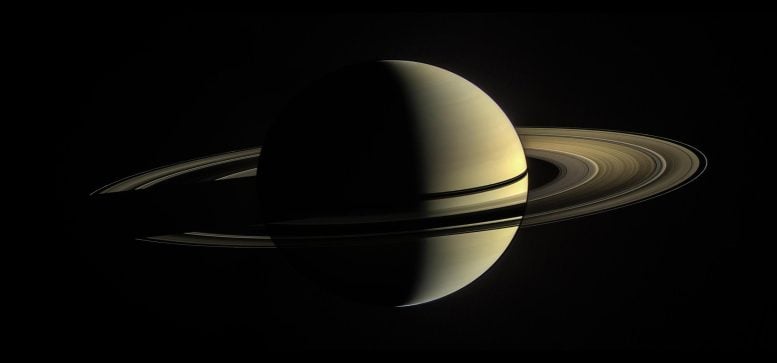
This was Cassini’s view from orbit around Saturn on January 2, 2010. In this image, the rings on the night side of the planet have been brightened significantly to more clearly reveal their features. On the day side, the rings are illuminated both by direct sunlight, and by light reflected off Saturn’s cloud tops. Credit: ASA/JPL-Caltech/Space Science Institute
“Just like a butterfly’s chrysalis, this satellite was long dormant and suddenly became active, and the rings emerged,” says Jack Wisdom. He is lead author of the new study and a professor of planetary sciences at MIT.
The study’s co-authors include Rola Dbouk at MIT, Burkhard Militzer of the University of California at Berkeley, William Hubbard at the University of Arizona, Francis Nimmo and Brynna Downey of the University of California at Santa Cruz, and Richard French of Wellesley College.
A moment of progress
In the early 2000s, scientists put forward the idea that Saturn’s tilted axis is a result of the planet being trapped in a resonance, or gravitational association, with Neptune. However, observations taken by NASA’s Cassini spacecraft, which orbited Saturn from 2004 to 2017, put a new twist on the problem. Scientists discovered that Titan, Saturn’s largest satellite, was migrating away from Saturn at a faster clip than expected, at a rate of about 11 centimeters per year. Titan’s fast migration, and its gravitational pull, led scientists to conclude that the moon was likely responsible for tilting and keeping Saturn in resonance with Neptune.
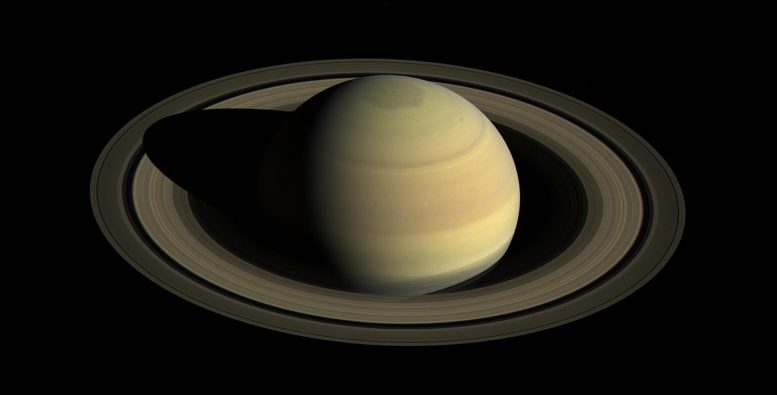
A view from NASA’s Cassini spacecraft shows Saturn’s northern hemisphere in 2016 as that part of the planet nears its northern hemisphere summer solstice. A year on Saturn is 29 Earth years; days only last 10:33:38, according to a new analysis of Cassini data. Credits: NASA/JPL-Caltech/Space Science Institute
Yet this explanation hinges on one major unknown factor: Saturn’s moment of inertia, which is how mass is distributed in the planet’s interior. Saturn’s tilt could behave differently, depending on whether matter is more concentrated at its core or toward the surface.
“To make progress on the problem, we had to determine the moment of inertia of Saturn,” Wisdom says.
The lost element
In their new study, Wisdom and his colleagues looked to pin down Saturn’s moment of inertia using some of the last observations taken by Cassini in its “Grand Finale,” a phase of the mission during which the spacecraft made an extremely close approach to precisely map the gravitational field around the entire planet. The gravitational field can be used to determine the distribution of mass in the planet.
Wisdom and his colleagues modeled the interior of Saturn and identified a distribution of mass that matched the gravitational field that Cassini observed. Surprisingly, they discovered that this newly identified moment of inertia placed Saturn close to, but just outside the resonance with Neptune. The planets may have once been in sync, but are no longer.
“Then we went hunting for ways of getting Saturn out of Neptune’s resonance,” Wisdom says.
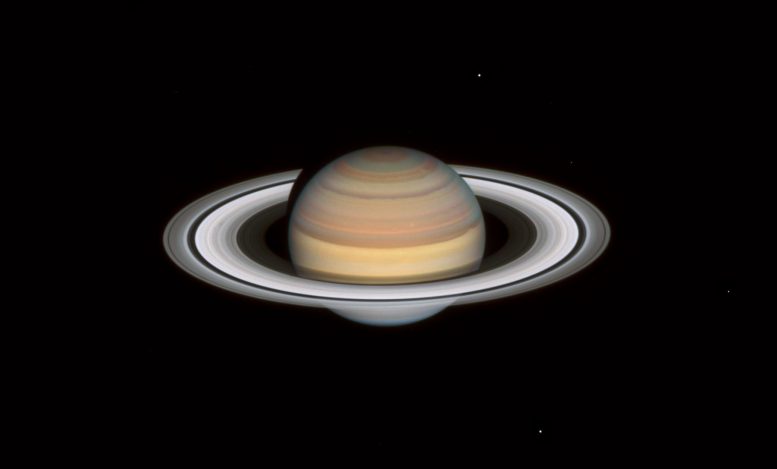
Hubble’s 2021 look at Saturn shows rapid and extreme color changes in the bands of the planet’s northern hemisphere. Credit: NASA, ESA, A. Simon (NASA-GSFC), and M. H. Wong (UC Berkeley); Image Processing: A. Pagan (STScI)
First, the team carried out simulations to evolve the orbital dynamics of Saturn and its moons backward in time, to see whether any natural instabilities among the existing satellites could have influenced the planet’s tilt. This search came up empty.
So, the researchers reexamined the mathematical equations that describe a planet’s precession, which is how a planet’s axis of rotation changes over time. One term in this equation has contributions from all the satellites. The team reasoned that if one satellite were removed from this sum, it could affect the planet’s precession.
Saturn Facts
- Planet Type: Gas giant
- Radius: 36,183.7 miles / 58,232 kilometers
- Day: 10.7 hours
- Year: 29 Earth years
- Moons: 63 confirmed and named / 20 provisional
- Axis Tilt: 26.73 degrees
The question was, how massive would that satellite have to be, and what dynamics would it have to undergo to take Saturn out of Neptune’s resonance?
Simulations were run by Wisdom and his colleagues to determine the properties of a satellite, such as its mass and orbital radius, and the orbital dynamics that would be required to knock Saturn out of the resonance.
From their results, they conclude that Saturn’s present tilt is the result of the resonance with Neptune and that the loss of the satellite, Chrysalis, which was about the size of Saturn’s third-largest moon, Iapetus, allowed it to escape the resonance.
Sometime between 200 and 100 million years ago, Chrysalis entered a chaotic orbital zone, experienced a number of close encounters with Iapetus and Titan, and eventually came too close to Saturn, in a grazing encounter that ripped the satellite to bits, leaving a small fraction to circle the planet as a debris-strewn ring.
The loss of Chrysalis, they found, not only explains Saturn’s precession, and its present-day tilt, but it also explains the late formation of its spectacular rings.
“It’s a pretty good story, but like any other result, it will have to be examined by others,” Wisdom says. “But it seems that this lost satellite was just a chrysalis, waiting to have its instability.”
Reference: “Loss of a satellite could explain Saturn’s obliquity and young rings” by Jack Wisdom, Rola Dbouk, Burkhard Militzer, William B. Hubbard, Francis Nimmo, Brynna G. Downey and Richard G. French, 15 September 2022, Science.
DOI: 10.1126/science.abn1234
This research was supported, in part, by NASA and the National Science Foundation.

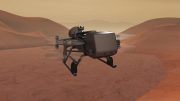
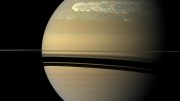
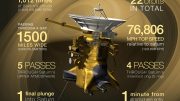
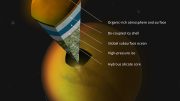
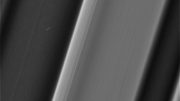
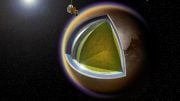
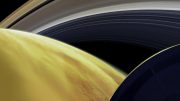
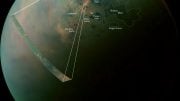
Is this a joke? Neptune is nowhere near Saturn; there is a gigantic gap between Saturn and Uranus, and an even larger one between Uranus and Saturn. Saturn and Neptune are not neighbors. And somehow the loss of a moon on Saturn breaks a resonance between planets that are 2 billion miles apart at their closest? What am I missing?
Enceladus. you know the moon thats spouting enough water into Saturns atmosphere to deplete some of Saturns ozone. Did you say icy ring particles?
Chrysalis, like any moon, has a very weak but non-zero level of sentience, enough for it to want to kill you.
What if the destruction of Chrysalis also caused the two-tone of Iapetus?